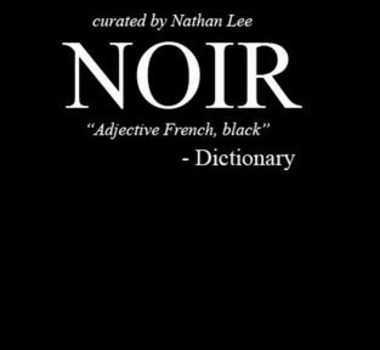The shifting definition of Black culture

Exhibition ‘NOIR’ presented at Living Arts Tulsa
Nathan Lee, executive director of Oklahoma City’s Inclusion In Art, returns for the third time to Living Arts Tulsa to curate the exhibit ‘NOIR.’ The show is scheduled during Living Arts’ celebration of Juneteenth, which commemorates the ending of slavery in the U.S. Living Arts’ Artistic Director, Steve Liggett, envisions the exhibit as a discussion to demonstrate respect and acknowledge the holiday.
Lee said he wanted to build from the unique African-American history that resulted from generations reinventing themselves due to slavery, loss of identity, and loss of culture. He wanted conversation on the class wars’ contribution to how African Americans live, and how African-Americans view other African-Americans.
“There was a time when being Black in America equaled the stereotype of impoverished and uneducated,” Lee said. “The dying negative connotations of the state of being Black have quickly been replaced with new ideas. The question now is, what are they?
“I wanted to look into the ‘now’ of Black/African American culture. I wanted to explore what Black culture currently is without looking back but rather by looking forward. The old quote ‘You must know your past to know your future’ is one of wisdom, but the present in my opinion is just as important for us to move forward to a positive future,” he said.
Lee chose NOIR’s artists for their creative voice and awareness as to who they are "now."
He selected artist Tiffany McKnight, because she “uses her work to celebrate being an individual free from stereotypes and negative expectations. In her work, Ms. McKnight simply is human,” Lee said.
“Skip Hill shows his freedom as a human by being able to embrace other cultures to enrich who he is. Elliot Robbins, on the other hand, is very aware of divisions and lines that still exist between races. His examination of the lack of Black males in Disney cartoons is alarming and thought provoking. His character, a nondescript cartoon struggling to find his way in a world which doesn't acknowledge his existence,” appears often in his work.
Lee says to him, art is a record of history, not always a verbatim recitation but rather an emotional content. Long after I forget a moment, Lee said, “for better or worse, my spirit and my heart remembers.
Lee said the “personal question for myself with NOIR is ‘Who am I at this precise moment?’ I think my answer will be different than many others. I think everyone's answer is constructed of truth as it relates to the individual. And for that reason, NOIR was important to me.”
The ‘NOIR’ exhibition will be on display at Living Arts, 307 E. Brady St., Tulsa, from June 6 through June 26.
NOIR is made possible through the generosity of the Andy Warhol Foundation for the Visual Arts.
The Gayly – June 5, 2014 @ 10:20am





